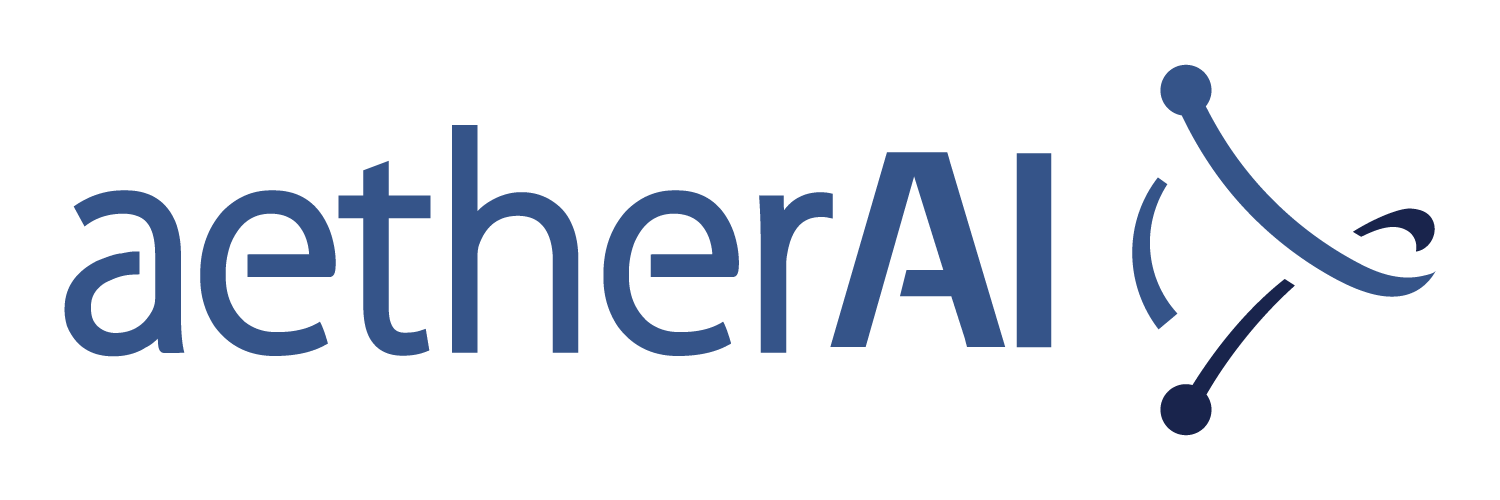Several months ago I posted a note about Sermo, the social networking site for physicians were you can post and exchange questions, ideas, comments, etc… The "My Space" for physicians as I have heard it called. I also mentioned in that post reference to Medscape. They have also entered the mix of social networking among doctors. I received an e-mail recently which invited me to "join the new Medscape Physician Connect. Share your professional experiences, pose questions to other doctors and voice opinions in our new physician-only social community". This is what I thought Sermo was.
Nonetheless, I have been following the pathology discussions on both of these sites. While I may not necessarily agree with the comments or approaches, perhaps there may be some benefit to these types of discussions outside of formal meetings and peer-reviewed articles to acquire knowledge.
I have reposted two recent discussions to illustrate the types of discussions if you are not familiar with these. As you will see, a lot of this is where art meets science, and evidently there is more than one way to skin a cat. I scrubbed the names and specialties from the posts and some of the responses are from the same ID but both include pathologists, surgeons, oncologists and radiation oncologists.
It is interesting to see the kinds of responses from the different specialties and you can guess which are which. Sometimes the responses are analytic, sometimes pragmatic, sometimes dogmatic. Look forward to your comments.
POST 1
Given the risk of false negatives for frozen sections/immediate cytology evaluation for breast sentinel lymph nodes, do you feel it is a viable option to instead eliminate such immediate assessments in favor of using only permanent specimens?
In your experience, do you feel the surgical community and patients will accept such a proposition?
#1 Is this the same thing as a touch prep?
#2 There really isn’t any risk with a false negative….no foul no harm. The patient just gets a second procedure to do the completion ALND. (Which by what you are proposing everyone would get a second procedure if permanents are positive as opposed to just the ones that had a false negative by touch preps) What you are doing with touch preps is saving the person a second procedure and by what you are suggesting you are subjecting everyone to a second procedure that had a positive permanent that could have been avoided if a positive touch prep had been found. Actually I would be more concerned with a false positive as opposed to a false negative. We tend to do touch preps (not Frozen
sections)and if positive do an immediate ALND which saves the patient a 2nd operation and anesthesia and time off work. The patient’s are informed that it is possible that a touch prep could be negative but be positive on permanent sections and if so then a second procedure to perform the ALND would be necessary. The key is to discuss the pros and con’s with the patient and let them know that they shouldn’t jump for joy and that they are not home free until the permanent sections are back. Most elect to have an immediate ALND if the touch prep is positive knowing full well that there is a possibility that the touch prep could be negative and the permanents positive which would then entail a second trip to the OR. They are also aware of a very small possibility of a false positive causing them to have an unnecessary ALND along with it’s risks is positive knowing full well that there is a possibility that the touch prep could be negative and the permanents positive which would then entail a second trip to the OR.They are also aware of a very small possibility of a false positive causing them to have an unnecessary ALND along with it’s risks .
False positives do cause concern because obviously no one wants the risks entailed with an unnecessary ALND(but heck that’s what we did
all the time before Sentinel nodes were being done) I personally (knock on wood) haven’t seen or heard of any false positives in my community.
If we were seeing false positives I doubt very many people would be doing any touch preps(or frozen sections) at all.
#3 1. This topic was recently discussed and,
2. False negatives are not the real problem, false positives would be.
I have not heard of a false positive, but it is certainly possible, particularly with touch preps. Germinal centers can show clustering of cells
and cytologic atypia that might be misinterpreted as metastatic ca. I tend to confirm suspicious touch preps with FS.
#4 So if you elect to skip immediate assessment (TP or FS), you will have to do a second procedure whenever axillary dissection is indicated on permanents; however, you will eliminate the possibility of a false positive diagnosis and unnecessary ALND.
#5 Agree with the above. I think most pathologists tend to err on the side of being conservative…that is, if there is something suspicious, but we are not confortable with calling it a met, we tell the surgeon to stop, knowing that the lesser evil is having to go back for a second procedure.
#6 Agree with above and on the patient surgical consent form, there is a place for the comment of "At your (the patient’s) request, an intraoperative consutation will be performed on a sentinel lymph node. The results of this will dictate whether an axillary disection will be performed during this proceedure or will be deferred until a later date. You *the patient* are indicating that you understand this with your initials placed here_________"
Or something to that effect. This gives the surgeon a way to aleviate the patients concern after they awake as to why did you not finish the proceedure and in cases where the initial intraoperative evaluation was negative but the follow-up permanent sections was positive, the legal ramifications are covered.
#7 Let us not forget that even permanent sections have false negatives. The studies have been done decade after decade showing us that if a paraffin block which initially contains tissues that were grossed in by sectioning at every 2mm were to be sectioned completely thru the block, there could be as high as a 10% false negative rate. What would you recommend for for your family member knowing that statistic?
#8 That being said, if a touch prep and/or frozen section of a sentinal lymph node biopsy were to be positive it would indeed save the patient an added procedure. On the flip side, this all takes time which means additional time under anesthesia.
#8 Another point should be made regarding the use of frozen sections for any reason. That is, surgeons and pathologists both know that occasionally diagnoses change when permanent sections are examined. That being said, patients should be informed before surgery that the frozen section diagnosis could change when permanents are examined and the surgeon is actually using the frozen sections/touch prep approach as guidance for the surgery should there be usefull information gained with the frozen or touch prep.
#9 Knowledgeable surgeons accept the notion of false negative frozen sections or cytology preparations for these cases and are hopefully educating their patients. Given the relatively recent public hype on the subject and the usefulness of the assessment (saving women from unnecessarily extensive procedures or second operations), I cannot see surgeons or their patients accepting a change in the current practice. I agree with other postings that false positives would be a more significant issue. In my experience with five pathologists doing predominantly frozen sections on breast sentinel lymph nodes, false positives have been nonexistent (knock on wood) and false negatives uncommon with the most frequent "false negative" being the discovery of isolated tumor cells.
#10 The problem with sentinal LN is usually a false negative. It rarely happens but if it does happen, ALND can be performed in a latter procedure. In our practice we do touch prep as well as frozen section examination of entire lymph node (if size permits). We never had a false positive in our practice.
#11 Touch preps require special skills and are it is not hard to do a frozen section. I would repeat that I do not think we know yet the value of the sentinel node biopsy since there is not a standard protocol and follow up is still too short.
#12 It is my current practice to perform an intraoperative interpretation, and that would be my preference for myself or a family member.
#13 One could argue that the risk of a second general anesthaesia procedure may be higher than that of an unwarranted axillary sampling (I haven’t seen a true ‘dissection’ in years, and hence risk of lymphedema, etc. are probably much lower than in the past).
#14 I feel only doing permanent sections would be safer for the patient and the clinician due to problems w/ both false positive and false negative immediate interpretations. Nevertheless, clinicians want to be able to do completion axillary disections at the same sitting if possible. A compromise we have adopted is to perform immediate interpretations only on larger, clinically and pathologically suspicious lymph nodes and add the caveat on negative interpretations that immediate evaluation reveals no evidence of metastatic tumor, but must await permanent sections for final interpretation.
#15 Intraoperative procedures are helpful in saving a second procedure if they are positive.
I believe that the type of intraoperative procedure should be left to the judgement of the pathologist and based primarily on the size of the node submitted with only touch preps done unless the node is sizeable.
#16 I’ll add this comment as was stated on the other post. When evaluating a patient for breast surgery, the patient has an ultrasound guided core biopsy by me in my office at the initial visit unless the lesion is only microcalcifications. At the same visit, I examine the axilla of the involved side with ultrasound. Any nodes that are visible by ultrasound in the axilla are considered abnormal and I do a FNA of these. If the FNA is positive then I know pre-op that the patient needs an axillary dissection. If the FNA is negative, the patient gets a sentinal node biopsy with PERMANENT sections. Having to return to the OR for a positive sentinal node on permanents has been rare.
#17 I don’t think false positive is a problem at daily practice and actually almost rarely seen.
#18 If frozen can make a definite dx, it saves pt to undergo 2nd procedure and save huge money in health care.
#19 We do touch preps instead of frozen sections.
#20 I think that the quality of the frozen sections depends upon the expertise of the doctor doing them,the number of cases that they handle daily and the quality of the equipment that is used. better quality is done at large volume centers ( e.g. Mayo clinic,NY Presbyterian, Memorial-Sloan Kettering). also if they have professional staff ( tech’s) to cut them, then usually it is better than if house staff cut them. if they have docotrs trained in cutting breast then that is also better. also communication with the surgeaon is essential. no ivory tower pathologists unwilling to go into the OR to talk with the surgeon please. you go right in there and talk with them,esp. if margins are involved or the so-called sentinel node is needed.
#21 Go into the OR…hell, I get to scrub in on cases once in a while….yippeeeee!!!!
POST 2
27 y/o develops pelvic fullness and vaginal spotting. Thinking she might be pregnant, she goes to her local ob/gyn who finds what she thinks is a fibroid. D & C leads to a diagnosis of adenoca. Patient is staged, with further studies showing a single "hot spot" on PET scan at the mass, and patient is referred to a gynecologic oncologist who performs radical surgery (at a different hospital)
Final path report totally changes the tumor type. It’s now being called a G2 leiomyosarcoma with epitheliod features; and it appears to be growing into the uterus from the round ligament. Nothing to suggest a uterine primary.
Recommendation from the out-of-area gyn-onc is six cycles of adjuvant doxorubicin/Iphosphamide/displatin.
We’re not sure we agree with the use of chemo at all, and to make life more complex a chemoresistance assay was also performed — showing that the tumor wasn’t sensitive to anything.
So would you consider this a sarcoma that just happened to involve the uterus ?
If so would you give some variant of anthracycline/Ifex chemo, or would you hold that for relapse.
Would you consider whole pelvic RT +/- cisplatin ??
We did "pick" another brain, who suggested the RT, if we felt compelled to do "something".
#1 of 8
"So would you consider this a sarcoma that just happened to involve the uterus ?"
Yes – I think so, if the gross examination of the uterus revealed a dominant mass in the round ligament that focally invaded the uterine wall. I think we’re in "rare tumor" land, where there will only be case reports of soft tissue sarcomas in the round ligament and not much help in guiding therapy. I think I would treat this as a soft tissue leiomyosarcoma arising in the pelvis/abdomen, if there is a standard treatment for that… Perhaps another pathologist will have more info….
#2 of 8
Not a uterine primary? As a long shot in the abdominal cavity, be sure you have ruled out gastrointestinal stromal tumor (GIST) which can look very much like epithelioid leiomyosarcoma. The reason: there is a good, specific potentially curative therapy for that, namely Gleevec. Immunostain to confirm: CD117 (c-kit)
#3 of 8
Good thought – I agree. Some GIST’s will stain with muscle markers. You never know – they may have already done this…
#4 of 8
I’m pretty sure that the pathologists have considered GIST, but it doesn’t hurt to ask them again. My partner would hate to miss something treatable
#5 of 8
A couple of thoughts from a gynecologic pathologist: from the description only, the tumor appears to be a round ligament derived epithelioid leiomyosarcoma. However, since we are including zebras in the differential herd, would consider the rare PEComa, which also has relatively reliable distinguishing immunostains, like GIST. Caveat, though, as soft tissue pathologists will tell you, CD117 positivity in any mesenchymal tumor does not necessarily mean it will respond to Gleevec.
#6 of 8
With the emphasis on the neoplasm apparently arising in the round ligament are we missing a different point in the original account: curettings diagnosed as adenocarcinoma (of the endometrium, I presume…it doesn’t say exactly)? Have had cases of p53 factor related multiple focal origins in the female pelvic tissues: uterine leimoyosarcoma, plus adenocarcinoma of the endometrium, plus mixed mesodermal adenosarcoma, etc, etc. What was the review diagnosis on the curettings? I have seen several cases along these line which stayed localized and treatment limited to surgical excision was sufficient for a five year "free of tumor" assessment. What are the adverse possibilities of the chemotherapy?
#7 of 8
yes, rare. pecoma worth a thought, recent article in ajsp about pecoma vs leiomyosarcomas of gyn tract. may mimic epithelioid lms. should stain with hmb45/melanA but also may stain with muscle markers. not clear to me that these are separate entities.
#8 of 8
Everything has been considered in this case. If the tumor and affected organs have ben successfully surgically removed the patient need careful followup only at this time.
































